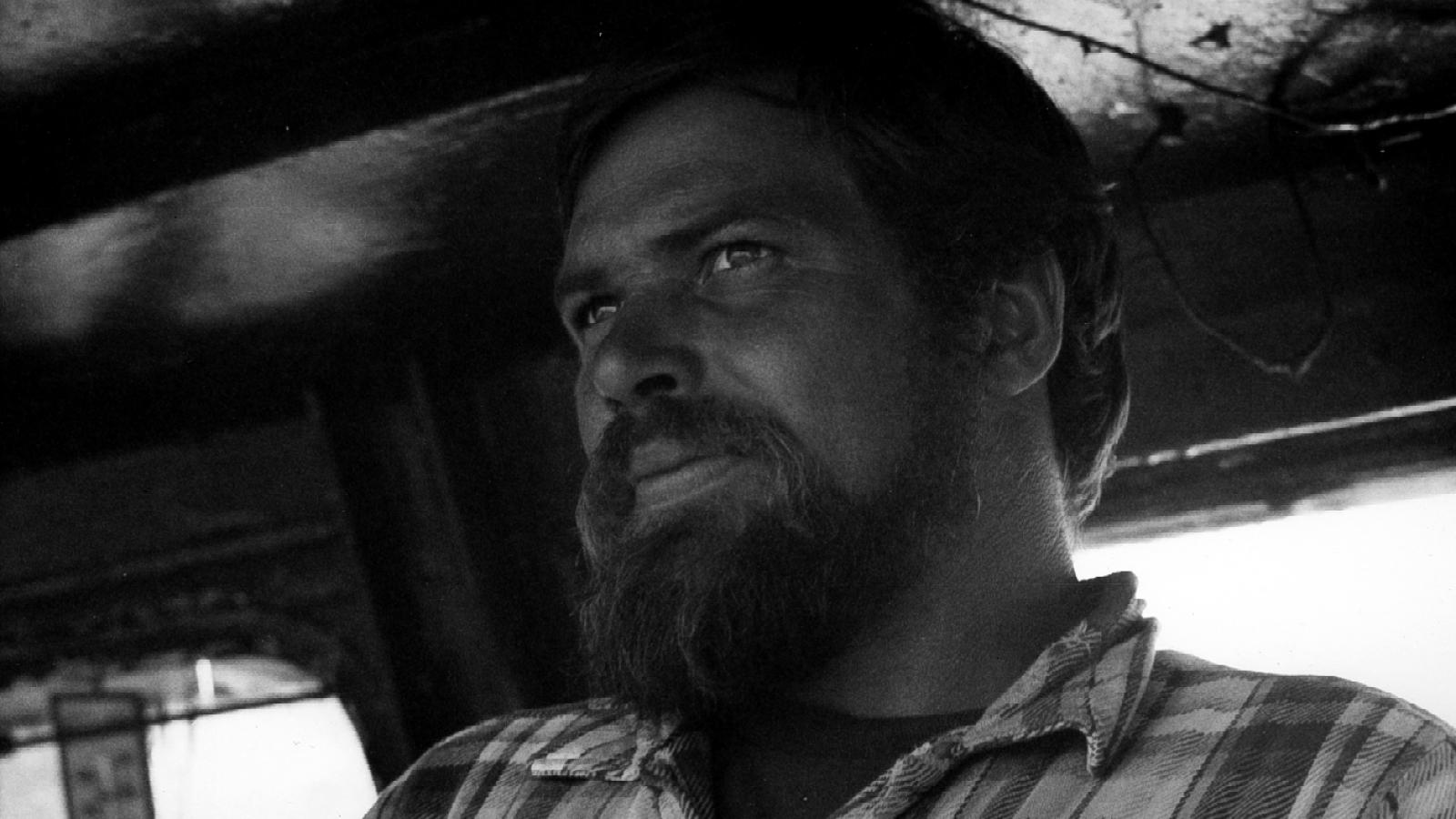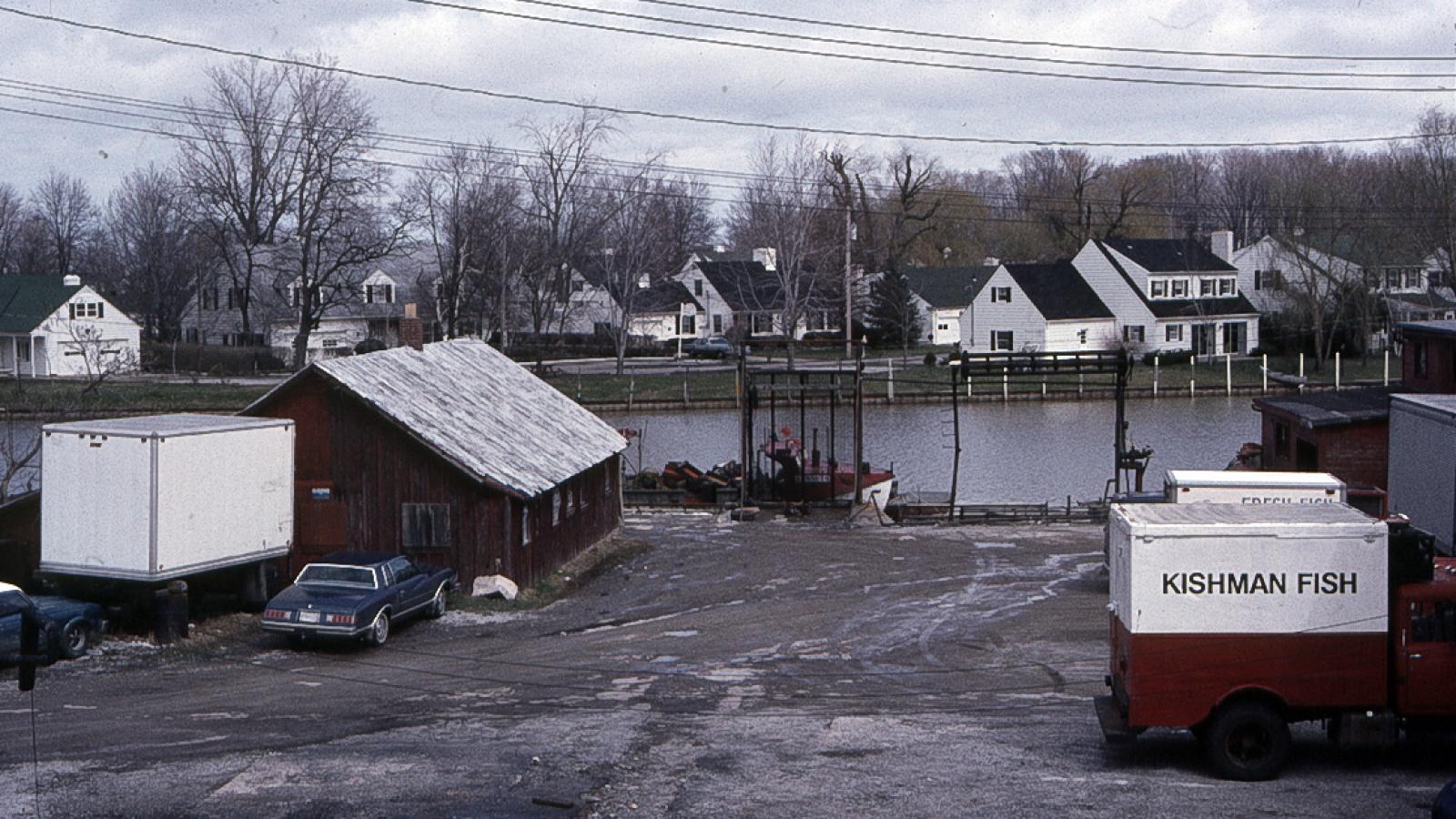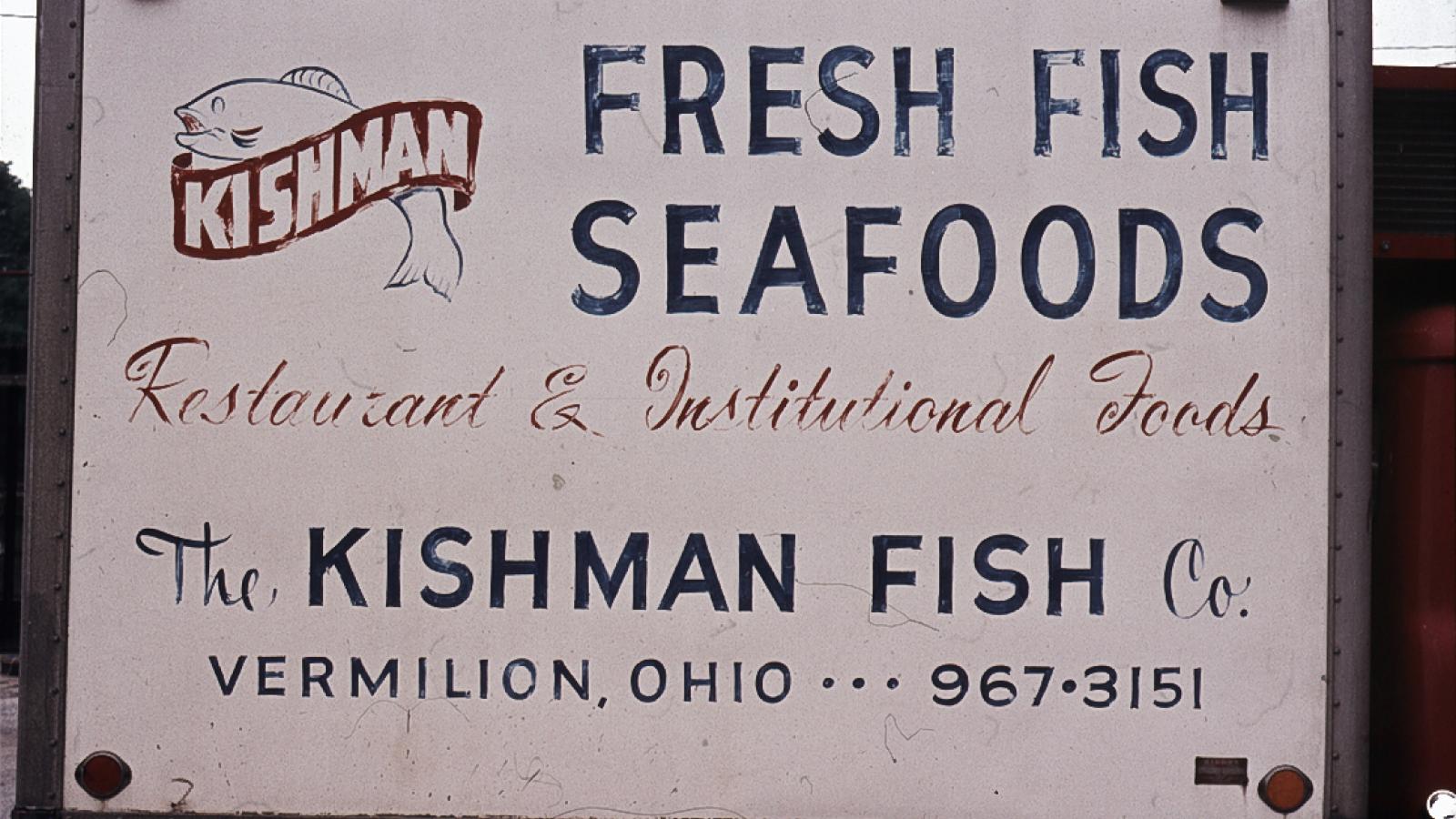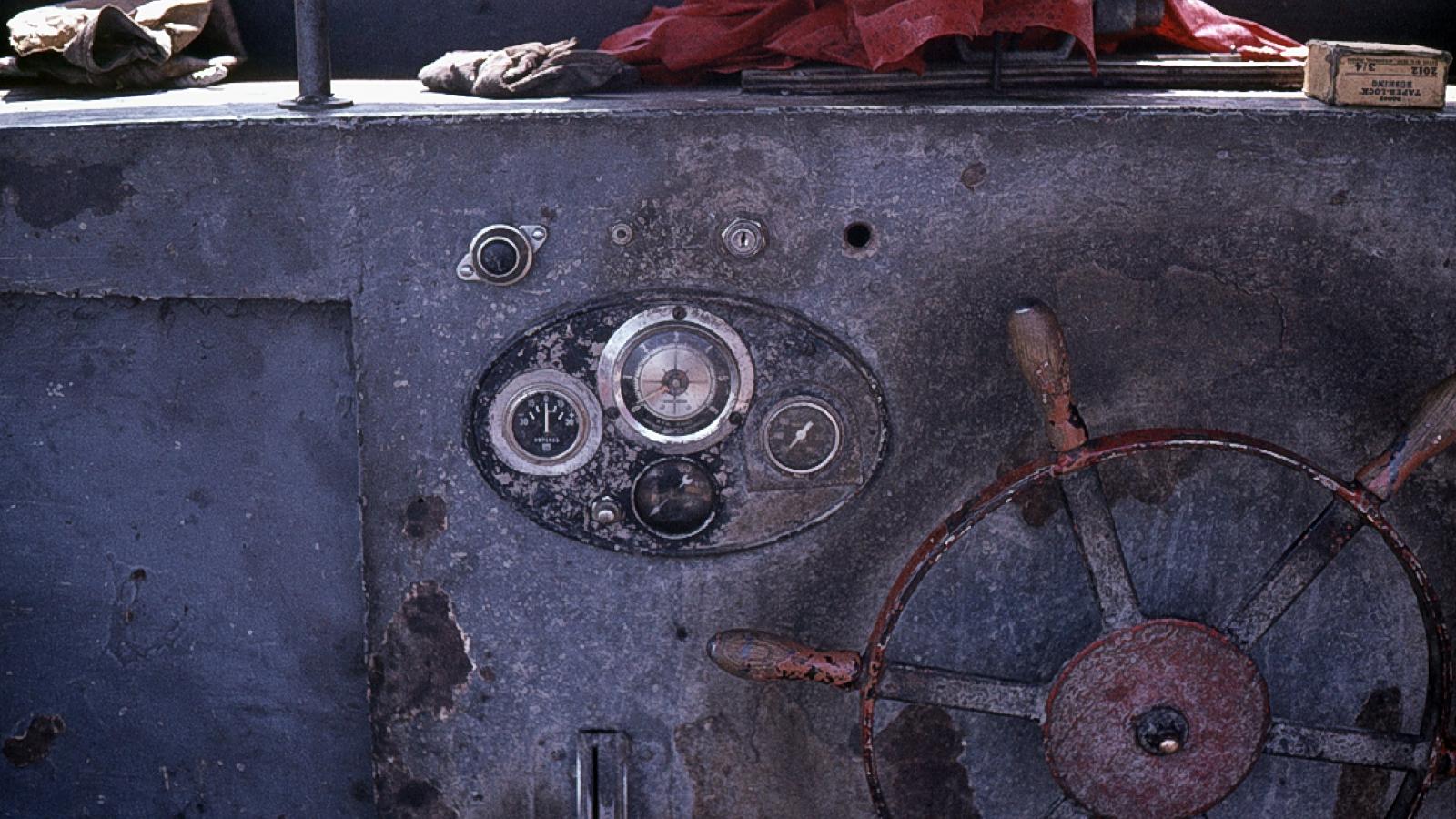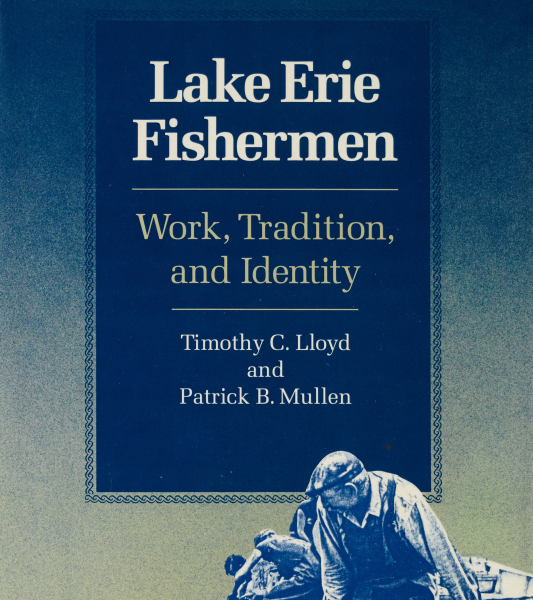The Lake Erie Fishermen Collection was compiled by Timothy C. Lloyd and Patrick B. Mullen from 1983 to 1984 in northern Ohio. The collection includes interviews with 20 individuals, thirty 90-minute TDK cassette tapes, 35 sheets of negatives, 35 contact sheets, 725 slides, 393 black-and-white photographs, 131 pages of logs of 16 interviews, 746 pages of transcription from 25 interviews, and one hardcover book. A secondary collection includes one binder of 52 CDs of audio material and three DVDs of audio material digitized from the cassette tapes.
Lake Erie Fishermen: Work, Tradition, and Identity, a co-authored monograph by Timothy C. Lloyd and Patrick B. Mullen, is available to read on the ACLS Humanities E-book website, where you can also access multimedia collection materials from the original fieldwork from our Folklore Archives.
[pdf] - Some links on this page are to .pdf files. If you need these files in a more accessible format, please contact cfs@odu.edu. PDF files require the use of Adobe Acrobat Reader software to open them. If you do not have Reader, you may use the following link to Adobe to download it for free at: Adobe Acrobat Reader.
Fieldwork
Timothy C. Lloyd and Patrick B. Mullen began their fieldwork in March 1983 and ended it in September 1985. They spent a total of twelve weeks on or along the Lake, observing, interviewing and documenting the work of commercial fishermen on fishing boats, at shore seining sites, at local fish wholesale houses and at leisure in restaurants, VFW halls, bars, and at kitchen tables. They interviewed active and retired fishermen, members of their families, wholesale distributors, State of Ohio biologists and wildlife enforcement agents. They were lucky enough be able to document the techniques and customs of gill-net fishing before it was prohibited by state regulation a year ago. They found active verbal, material and customary traditions shared among local fishermen, through which the culture and identity of this group are expressed.
The following materials were created or compiled in the course of their fieldwork:
- Approximately 45 hours of tape-recorded interviews, some 40 hours of which have been transcribed. Interview topics include: (a) personal biographies of commercial fisherman; (b) descriptions of work techniques and the ways in which they were and are commonly learned; (c) comparisons of the conditions of work in the (both “good” and “bad”) “old days” with conditions today; (d) explanations of net design construction and repair techniques; (e) stories about unusual or eccentric local “characters” who are or were part of the occupational group; (f) examples of weather and fish-finding signs, beliefs and prediction practices, including stories of unexpected encounters with bad weather; (g) expressions of opinion about the actions of state regulatory agencies and sport fishing interests which have harmed the local commercial fishing industry, including narratives about run-ins with enforcement officers (what folklorist Tim Cochrane has called “authority stories”) and sport fishermen; and (h) expressions of occupational identity (many of which they have come to call “It gets in your blood” stories), including descriptions of the tradition of fishing within area families, stories about fishermen’s dissatisfaction with other kinds of work on shore and narratives about the conflicts between the images fishermen hold of themselves and the images they believe others hold of them.
- Approximately 1100 black-and-white photographs, all printed onto contact sheets, of which 400 have been made into 5x7 prints in preparation for selecting about 100 images for the final publication. The photos document: (a) the three fishing techniques practiced in Lake Erie during the time of our fieldwork; (b) examples of the material culture of the occupation (boats, buildings, tools and other equipment—see photo 11); (c) net design, construction and repair techniques; (d) work activities at local “fish houses”; and (e) portraits of commercial fishermen and, in some cases, their wives and families. About 15% of these black-and-white photographs are copies of historical photographs from the files of the Great Lakes Historical Society in Vermillion, Ohio, or from local newspapers, especially the Toledo Blade, which regularly printed photographs documenting the local fishing industry.
- Approximately 720 color slides, which duplicate in color the subjects covered in the black-and-whites. The slides will be used in the public programs mentioned above, and the Ohio Sea Grant Program is considering the possibility of working with us to prepare a slide or slide-tape presentation from this material. All of the black-and-white photographs and color slides have been numbered and their subjects indexed for easy access. Copies of the contact sheets and slides, with indices, will be provided to the Ohio Sea Grant Program in Columbus and the Great Lakes Historical Society in Vermilion (located in the area where the fieldwork was done).
- Approximately 200 Xeroxed pages of manuscript and other printed sources, catalogs and other descriptive materials from netting and commercial fishing equipment suppliers and articles on the commercial fishing industry printed in area newspapers over the past forty years. Some of this material was used in the preliminary research and some of it will be included in the final publication and later public programs.
Themes
Excerpt from the Final Report
The commercial fishing industry in Ohio is in serious trouble. Catches are smaller, as are income and profits, and state regulation has closed down a good part of the industry and threatens to effectively eliminate the rest of it.
This situation had both bad and good results for our fieldwork. There is simply much less of an occupation now than before--many fishermen, especially older ones, have left the business and work (and in many cases live) elsewhere; fewer boats go out each day; fewer fish houses remain open; many former gathering places of commercial fishermen are now filled with pleasure boaters; knowledge of the design and construction of nets is less common and that of boatbuilding is no longer put to use and is rapidly fading from working memory. In short, we found an especially striking version of the typical “you should have been here X years ago” situation familiar to cultural fieldworkers.
At the same time, the very hard going of the occupation seems to have created a resurgence of a more defiant expression of identity among local fishermen. As must be clear from this report, much of our interviewing ended up centering on some variation of this theme, and our publication will reflect the shape and content of those interviews. Had we done this project twenty or even ten years ago, the orientation of the fishermen and our reading of the traditional aspects of their work might have been quite different. Folklorists delude themselves if they think that their work alone will lead to the sort of social changes that they may hope for, even when those changes are also sought by their collaborators among “the folk.” There is no doubt, though, that folkloristic work can make a contribution to the understanding of the lively dimensions of a family, community or occupation that cannot be achieved by a strictly economic calculation or analysis--a human understanding that is necessary, but not sufficient, for any social change to take place.
We hope that our work thus far, and the publication and other products of fieldwork, will present the fishermen's point of view in a way that they would approve of, and we hope it, along with their own efforts, will have some positive effect on the situation of their livelihood. We hope that our work will encourage other folklorists and students of culture to examine and report upon the narrative (as well as the material and performing) aspects of traditional art, and on the arts and customs of working groups of kinds. We appreciate the opportunity to have done this work and we encourage you to support similar projects in the future.
Lake Erie Project/NEA Grant #32-5530-0009
Traditional Arts Program
Ohio Arts Council
Timothy C. Lloyd, American Folklore Society
Patrick B. Mullen, Emeritus, Ohio State University
To access other archives, projects, and materials about commercial, recreational, and sibsistence fishing in the US and it's territories, visit the Voices from the Fisheries website and consult their database!
[pdf] - Some links on this page are to .pdf files. If you need these files in a more accessible format, please contact cfs@osu.edu. PDF files require the use of Adobe Acrobat Reader software to open them. If you do not have Reader, you may use the following link to Adobe to download it for free at: Adobe Acrobat Reader.

